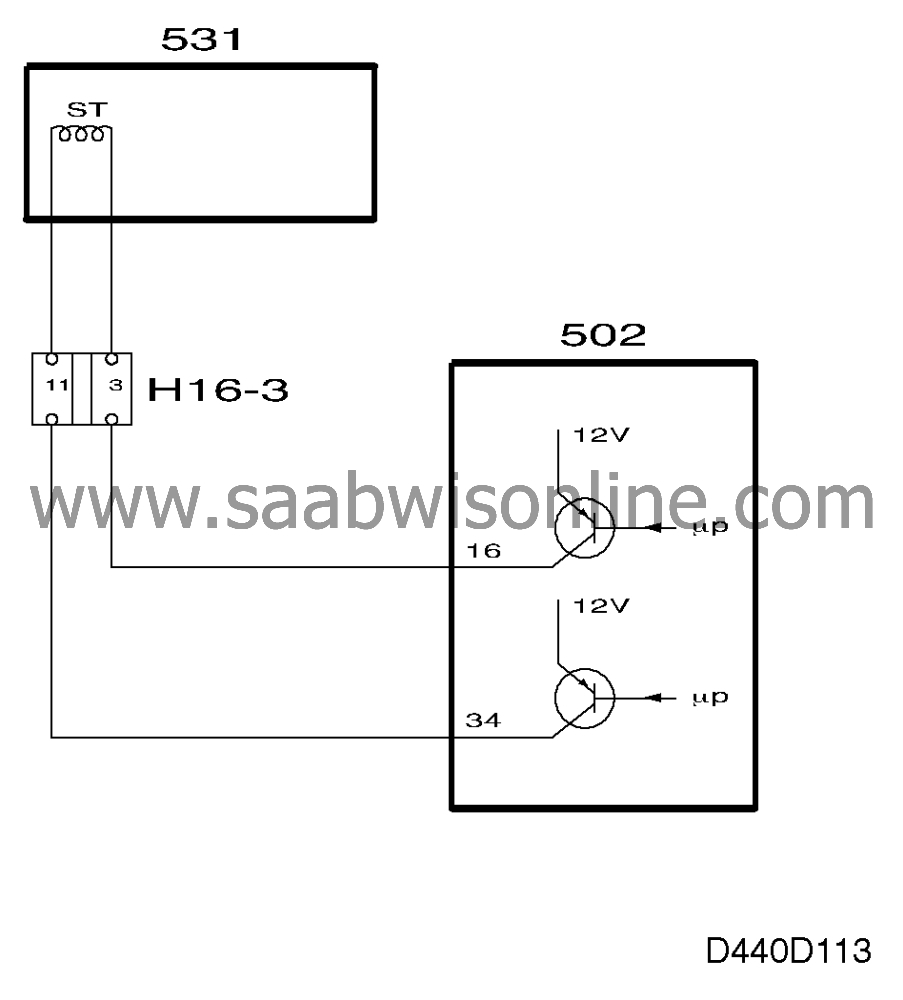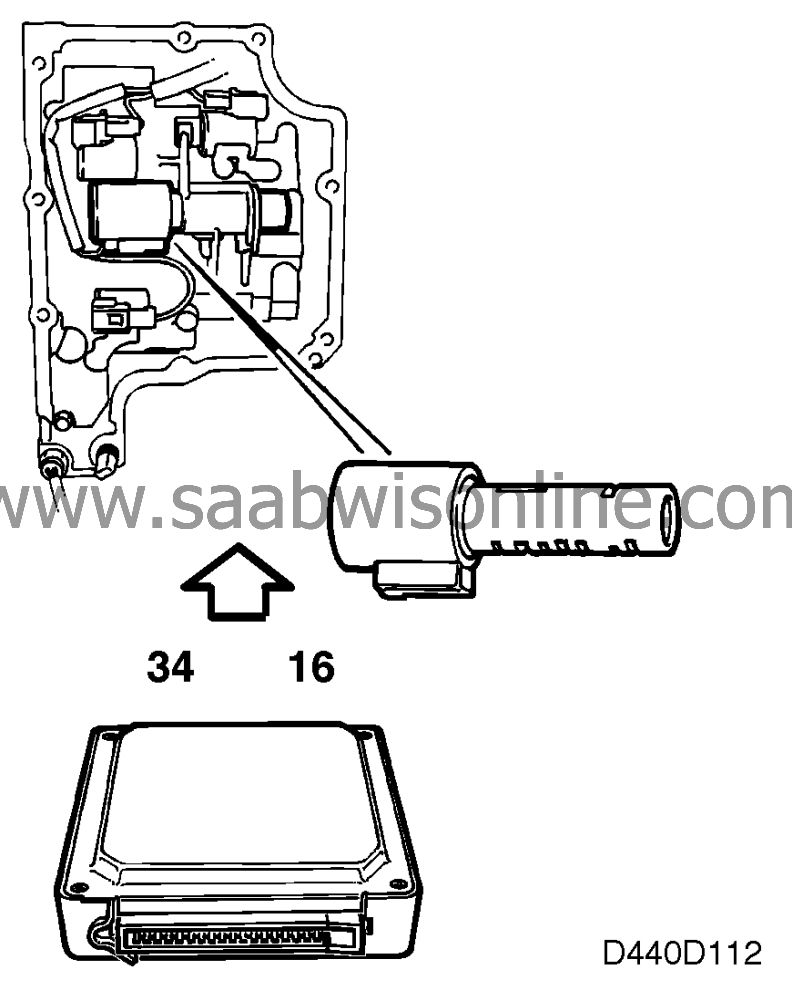Solenoid valve, SI, for system pressure
| Solenoid valve, SI, for system pressure |

Solenoid valve ST is located in the valve housing which is mounted on the transmission. The solenoid regulates the automatic transmission's system pressure.
Instead of being grounded in the transmission, the solenoid is connected to ground internally in the transmission control module. The solenoid is supplied with current from pin 16 of the transmission control module and the current returns to the transmission control module on pin 34. It is controlled by a varying current from the transmission control module, the strength of the current being primarily a function of the throttle position. At high currents, about 1 A, the fluid pressure is low and at low currents, or if the supply is cut off, maximum system pressure will obtain.
When shifting from N to R, the control module lowers the system pressure to avoid jerky shifting. When the oil temperature is greater than 10°C, and the vehicle speed is greater than 5 km/h, the control module increases the system pressure to reduce the gear-shifting times.
The function is disengaged in the following situations: • fluid temperature higher than 20°C • vehicle speed greater than 7 km/h • change in position of selector lever
The resistance of the solenoid winding is about 4 ohms.
At idling speed with the handbrake applied and the selector lever in position D, the current should be about 900 mA and the fluid pressure 3.4-4.6 bar.
Electrical faults (shorting to ground or battery positive (B+) and open circuit) in the solenoid valve or wiring will activate the limp-home mode.



